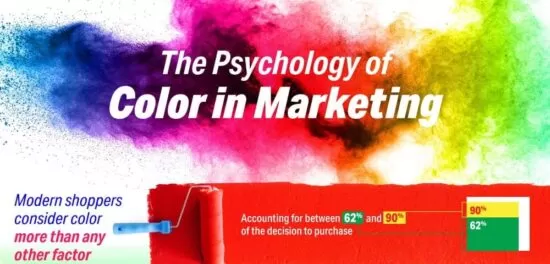According to an Entrepreneurng report, modern consumers now give color one of the most weighty considerations when making purchases of goods or services. In actuality, between 62 and 90% of purchasing decisions are influenced by color.
The use of color to elicit a variety of emotional and physical reactions in people is possible thanks to the overwhelming psychology of color in marketing.
The employment of color may occasionally alter hunger, improve mood, improve memory, or lengthen attention span. Also, colors can soothe clients, lessen how long they think their waits will be, and potentially boost sales and conversions.
The most popular marketing colors are used by companies like Target, Ikea, Sesame Street, Roku, Prada, and The Home Depot to boost sales. More specifically, red is the hue that generates the most conversions and sales for Target.
The most readable color scheme for audiences and one that soothes buyers’ regret is Ikea’s combination of yellow and blue.
The recognizable green from Sesame Street inspires action and increases creativity in wearers and recipients. Roku’s purple is one of the hues that appeal largely to ladies and signifies wealth and power.
Black from Prada is popular among males and represents sophistication and strength. The orange used by The Home Depot is a very unique brand color that stands out from the competition and speaks for itself.
Importance Of Color In Business Marketing
The human brain and the bodily reactions it triggers are directly impacted by color. Red, for instance, raises systolic blood pressure and pulse rates both by 0.356 points. Orange increases blood flow, which increases oxygen to the brain and increases productivity. Yellow speeds up metabolism and can make people feel hungry.
When compared to red or white surroundings, walking in a green environment can lower heart rate by 11 points. Bedrooms should be painted blue since studies suggest that 60% of people who sleep in blue rooms wake up cheerful. Purple is a favorite color of kids, with 75% of kids saying they prefer it to all other colors.
White has the power to make rooms look larger than they are by reflecting sunlight, and the color pink reduces juvenile aggression by 45 percent.
It is because of these responses in humans that color is an important factor in many different settings and industries. When it comes to home design, real estate is one area where color can have a significant impact. In a house, light blue, gray, and black are effective hues.
These hues are well-liked and cozy, seen as neutral and tidy, and can even imply a sense of luxury or high value. On the other hand, underwhelming hues like brown, red, and pale yellow have lower sales, are linked to negative feelings, and are unpopular with the general public.
Conclusion
The modern age of business embraces the use of color in marketing. Gaining the hearts and minds of their devoted consumers, those who can harness this force will succeed in their attempts by a factor of ten. So as a business icon applying this rule to a brand, your product shows how far you can go in business.


